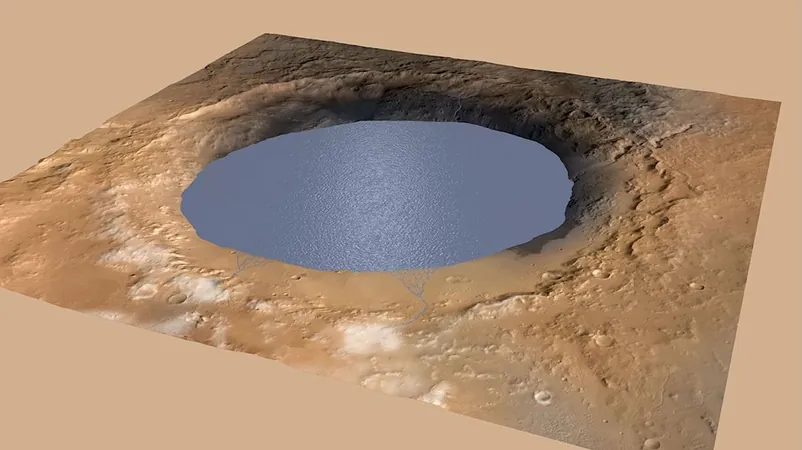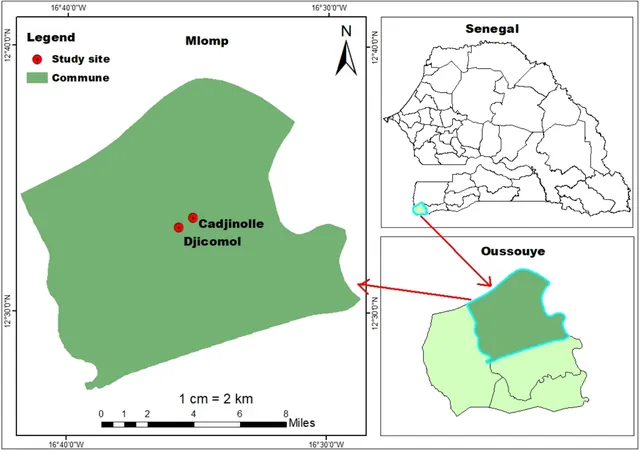
Groundbreaking Discovery: Ancient Ice-Free Lakes and Wave Ripples on Mars!
2025-01-27
Author: Daniel
Groundbreaking Discovery: Ancient Ice-Free Lakes and Wave Ripples on Mars!
In a remarkable breakthrough, researchers have unveiled evidence of two ancient sets of wave ripples on Mars, which are telltale signs of bodies of water that once existed on the Red Planet. These wave ripples, formed by the gentle lapping of wind-driven water, indicate that shallow lakes were present and accessible to the Martian atmosphere—a striking contrast to previous climate models that suggested ice-covered conditions.
Dating back approximately 3.7 billion years, these ripples provide some of the clearest indicators of ancient standing water in Mars' geological history. The research team, led by prominent geologists John Grotzinger and Michael Lamb from Caltech, argues that this suggests a warm and dense Martian climate capable of supporting liquid water at that time. Claire Mondro, the study’s lead author, states, “The unique shape of these ripples could only form in water exposed to the atmosphere, influenced by wind.”
The ripples themselves are quite small, measuring about 6 millimeters in height and spaced between 4 to 5 centimeters apart. Such dimensions imply the existence of a shallow lake less than 2 meters deep, a significant finding that hints at a wetter Martian past. “This extends the timeline of liquid water’s presence, opening possibilities for future discoveries related to microbial life on Mars,” Mondro adds.
NASA's Curiosity rover made this groundbreaking discovery in 2022 while traversing the Gale Crater. Two distinct sets of ripples were identified: one located in a region that used to feature wind-blown dunes, known as the Prow outcrop, and the other in an area dubbed the Amapari Marker Band. These findings suggest that ancient atmospheric conditions conducive to liquid water were not only present once but occurred at multiple points in Mars' history.
Grotzinger, the former project scientist for Curiosity, emphasized the significance of this discovery for Martian paleoclimate research. He noted, “Our quest for these features has been ongoing since the Opportunity and Spirit rovers began their missions in 2004. While earlier missions hinted at water flowing across ancient Martian surfaces, the existence of lakes has been questioned until now.”
The implications of these findings could reshape our understanding of Mars' climatic evolution and its potential to host life in the past. The study, published in the journal Science Advances, reinforces the idea that Mars was not always the cold desert it is today, but rather a dynamic environment that may have been hospitable to life.
This discovery not only adds to our knowledge of Martian geology but also fuels excitement for future missions aimed at uncovering more secrets about the planet’s history. As we continue exploring Mars, who knows what additional revelations await us regarding its ancient lakes and potential for past life? The quest for understanding Mars continues, and each finding brings us one step closer to uncovering the mysteries of the universe!



 Brasil (PT)
Brasil (PT)
 Canada (EN)
Canada (EN)
 Chile (ES)
Chile (ES)
 Česko (CS)
Česko (CS)
 대한민국 (KO)
대한민국 (KO)
 España (ES)
España (ES)
 France (FR)
France (FR)
 Hong Kong (EN)
Hong Kong (EN)
 Italia (IT)
Italia (IT)
 日本 (JA)
日本 (JA)
 Magyarország (HU)
Magyarország (HU)
 Norge (NO)
Norge (NO)
 Polska (PL)
Polska (PL)
 Schweiz (DE)
Schweiz (DE)
 Singapore (EN)
Singapore (EN)
 Sverige (SV)
Sverige (SV)
 Suomi (FI)
Suomi (FI)
 Türkiye (TR)
Türkiye (TR)
 الإمارات العربية المتحدة (AR)
الإمارات العربية المتحدة (AR)